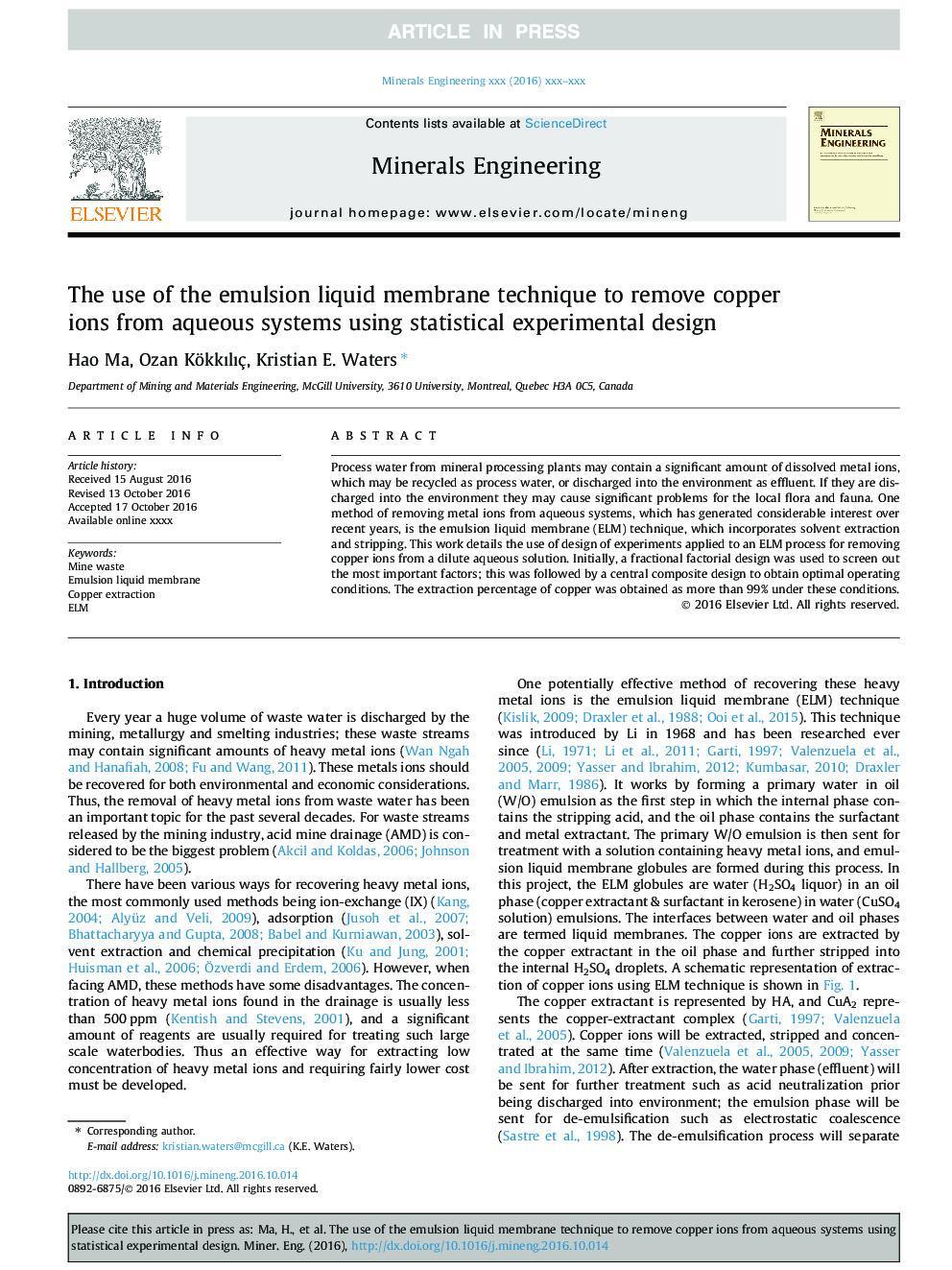| Article ID | Journal | Published Year | Pages | File Type |
|---|---|---|---|---|
| 4910216 | Minerals Engineering | 2017 | 12 Pages |
Abstract
Process water from mineral processing plants may contain a significant amount of dissolved metal ions, which may be recycled as process water, or discharged into the environment as effluent. If they are discharged into the environment they may cause significant problems for the local flora and fauna. One method of removing metal ions from aqueous systems, which has generated considerable interest over recent years, is the emulsion liquid membrane (ELM) technique, which incorporates solvent extraction and stripping. This work details the use of design of experiments applied to an ELM process for removing copper ions from a dilute aqueous solution. Initially, a fractional factorial design was used to screen out the most important factors; this was followed by a central composite design to obtain optimal operating conditions. The extraction percentage of copper was obtained as more than 99% under these conditions.
Related Topics
Physical Sciences and Engineering
Chemical Engineering
Chemical Engineering (General)
Authors
Hao Ma, Ozan Kökkılıç, Kristian E. Waters,
